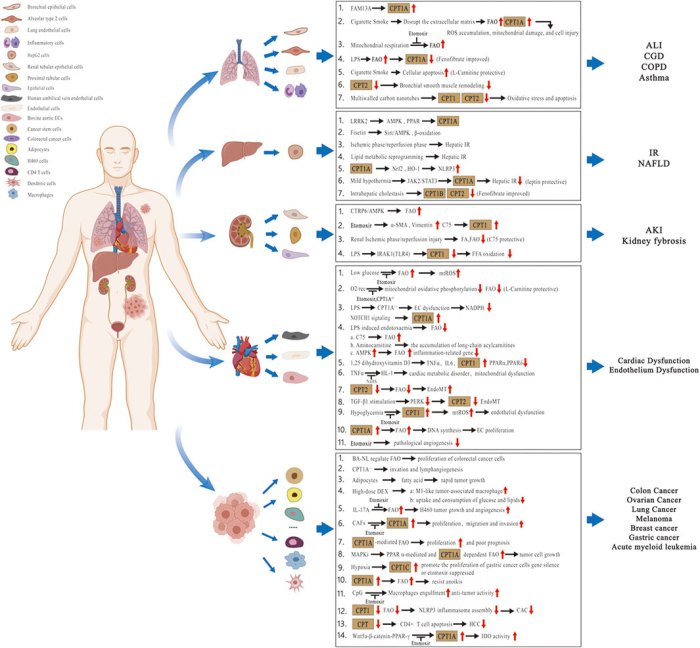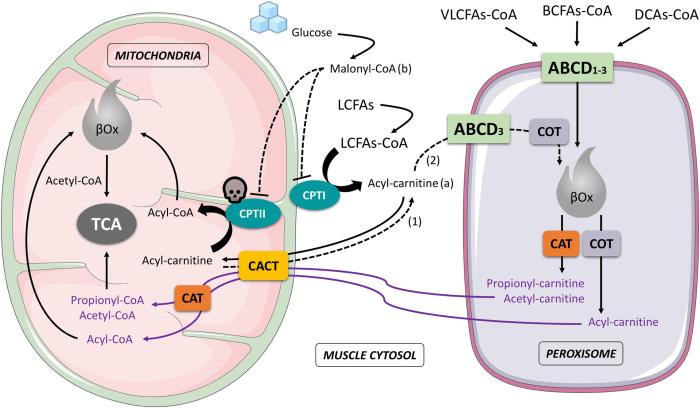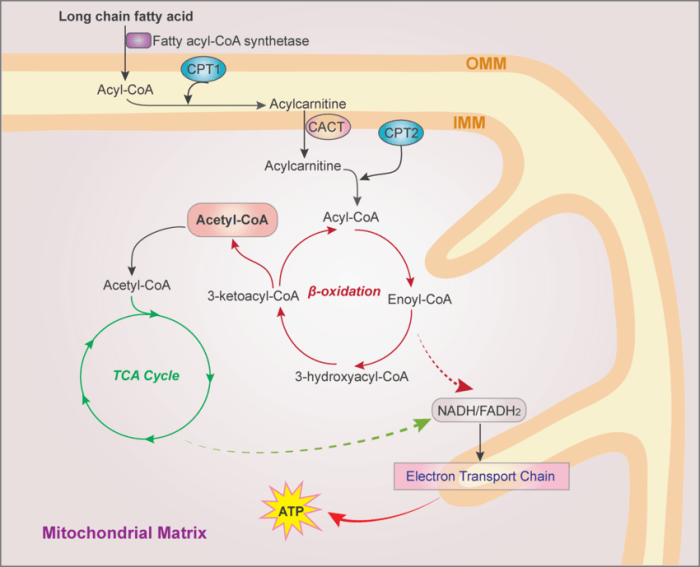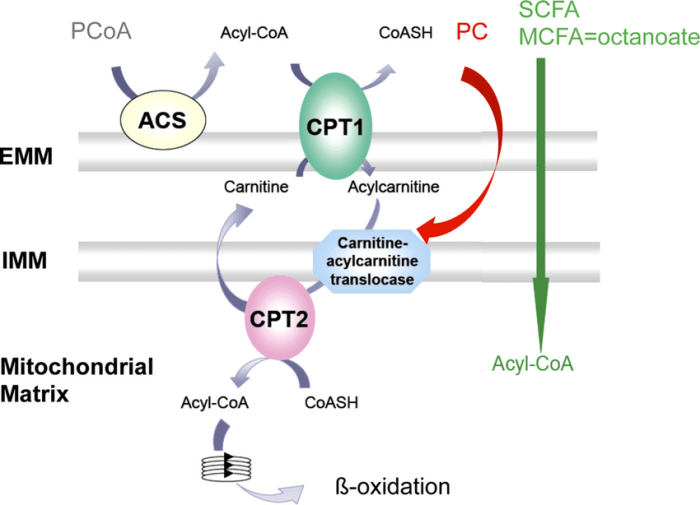Label the enzymes and compounds of the carnitine shuttle system – Labeling the enzymes and compounds of the carnitine shuttle system is crucial for understanding its role in energy metabolism, particularly in the heart. This system facilitates the transport of fatty acids into the mitochondria for energy production.
The carnitine shuttle system involves several key enzymes and compounds. Carnitine palmitoyltransferase I (CPT I) is responsible for transferring fatty acids from coenzyme A to carnitine, allowing them to cross the mitochondrial membrane. Carnitine-acylcarnitine translocase (CACT) then transports the fatty acid-carnitine complex into the mitochondrial matrix.
Once inside, carnitine palmitoyltransferase II (CPT II) converts the complex back to fatty acyl-CoA, which can enter the beta-oxidation pathway for energy production.
Carnitine Shuttle System

The carnitine shuttle system is a critical metabolic pathway that facilitates the transport of long-chain fatty acids into the mitochondria for energy production. It plays a pivotal role in energy metabolism, particularly in tissues with high energy demands, such as the heart.
Enzymes of the Carnitine Shuttle System
The carnitine shuttle system involves three key enzymes:
- Carnitine palmitoyltransferase I (CPT I)
- Carnitine-acylcarnitine translocase (CACT)
- Carnitine palmitoyltransferase II (CPT II)
CPT I catalyzes the formation of acylcarnitine from fatty acyl-CoA and carnitine. CACT transports acylcarnitine across the mitochondrial inner membrane. CPT II hydrolyzes acylcarnitine to regenerate fatty acyl-CoA and carnitine, allowing the fatty acid to enter the mitochondria for β-oxidation.
Compounds of the Carnitine Shuttle System
The carnitine shuttle system utilizes three main compounds:
- Carnitine
- Fatty acyl-CoA
- Acylcarnitine
Carnitine is the carrier molecule that shuttles fatty acids across the mitochondrial membranes. Fatty acyl-CoA is the activated form of fatty acids that binds to carnitine. Acylcarnitine is the intermediate compound formed during the transport process.
Regulation of the Carnitine Shuttle System, Label the enzymes and compounds of the carnitine shuttle system
The activity of the carnitine shuttle system is regulated by several factors, including:
- Energy demand
- Hormones (e.g., insulin, glucagon)
- Substrate availability
Under high energy demand, the system is stimulated to increase fatty acid oxidation. Hormones can modulate the activity of CPT I, the rate-limiting enzyme of the system.
Clinical Significance of the Carnitine Shuttle System
Defects in the carnitine shuttle system can lead to metabolic disorders, such as carnitine deficiency and fatty acid oxidation disorders. These disorders can impair energy production and cause a variety of symptoms, including muscle weakness, fatigue, and heart problems.
Detailed FAQs: Label The Enzymes And Compounds Of The Carnitine Shuttle System
What is the primary role of the carnitine shuttle system?
The carnitine shuttle system facilitates the transport of fatty acids into the mitochondria for energy production.
Which enzyme initiates the transfer of fatty acids into the mitochondria?
Carnitine palmitoyltransferase I (CPT I) is responsible for transferring fatty acids from coenzyme A to carnitine.
What is the significance of the carnitine shuttle system in heart function?
The heart relies heavily on fatty acids for energy, and the carnitine shuttle system is essential for transporting these fatty acids into the mitochondria.


